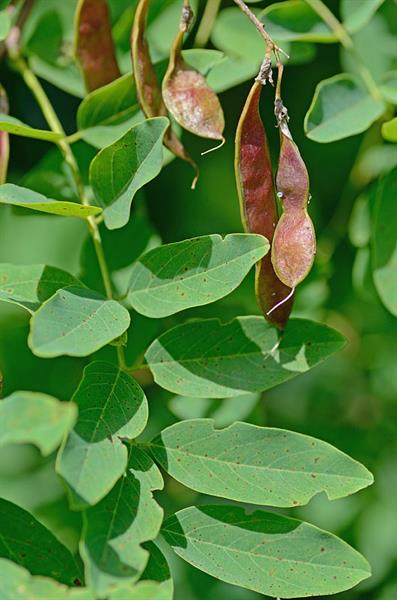
Origin/Endemic status: Endemic
Other Comments: Often considered a weed tree; Correll & Johnston (1970) stated "black locusts are weedy, 'dirty' trees and root-sprout perniciously, therefore they are to be avoided in cultivation, although they are widely touted by unscrupulous nursery-dealers as 'million-dollar shade trees' ".
Synonymy: = Ar, C, Fl3, FNA11.2, Il, K1, K3, Mi, NcTx, NE, NY, Pa, S13, SE3, Tx, Va, W, WH3, Isely & Peabody (1984); = Robinia pseudo-acacia – F, GrPl, RAB, S, Tat, WV, orthographic variant; > Robinia pseudo-acacia var. pseudo-acacia – G, orthographic variant; > Robinia pseudo-acacia var. rectissima (L.) Raber – G, orthographic variant
Wetland Indicator Status:
- Atlantic and Gulf Coastal Plain: UPL
- Eastern Mountains and Piedmont: FACU
- Great Plains: UPL
- Midwest: FACU
- Northcentral & Northeast: FACU
Heliophily: 7
Hover over a shape, letter, icon, or arrow on the map for definition or see the legend.
 © Keith Bradley | Original Image ⭷
© Keith Bradley | Original Image ⭷ © Gary P. Fleming | Original Image ⭷
© Gary P. Fleming | Original Image ⭷ © Keith Bradley | Original Image ⭷
© Keith Bradley | Original Image ⭷ © Joey Shaw source | Original Image ⭷
© Joey Shaw source | Original Image ⭷ © Gary P. Fleming | Original Image ⭷
© Gary P. Fleming | Original Image ⭷ © Richard & Teresa Ware CC-BY-NC, permission granted to NCBG | Original Image ⭷
© Richard & Teresa Ware CC-BY-NC, permission granted to NCBG | Original Image ⭷ © Edwin Bridges | Original Image ⭷
© Edwin Bridges | Original Image ⭷ © Erik Danielson source | Original Image ⭷
© Erik Danielson source | Original Image ⭷ © Scott Ward | Original Image ⭷
© Scott Ward | Original Image ⭷Feedback
See something wrong or missing on about Robinia pseudoacacia? Let us know here: (Please include your name and email if at all complicated so we can clarify if needed.)
Cite as...